Trading industries / Burgundy
Men of steel
Despite a background in couture, Emmanuel Diemoz and Antoine Bejui had no qualms about buying Tolix, a maker of metal furniture. The French heritage brand’s revival reflects the boom in traditional luxury design.
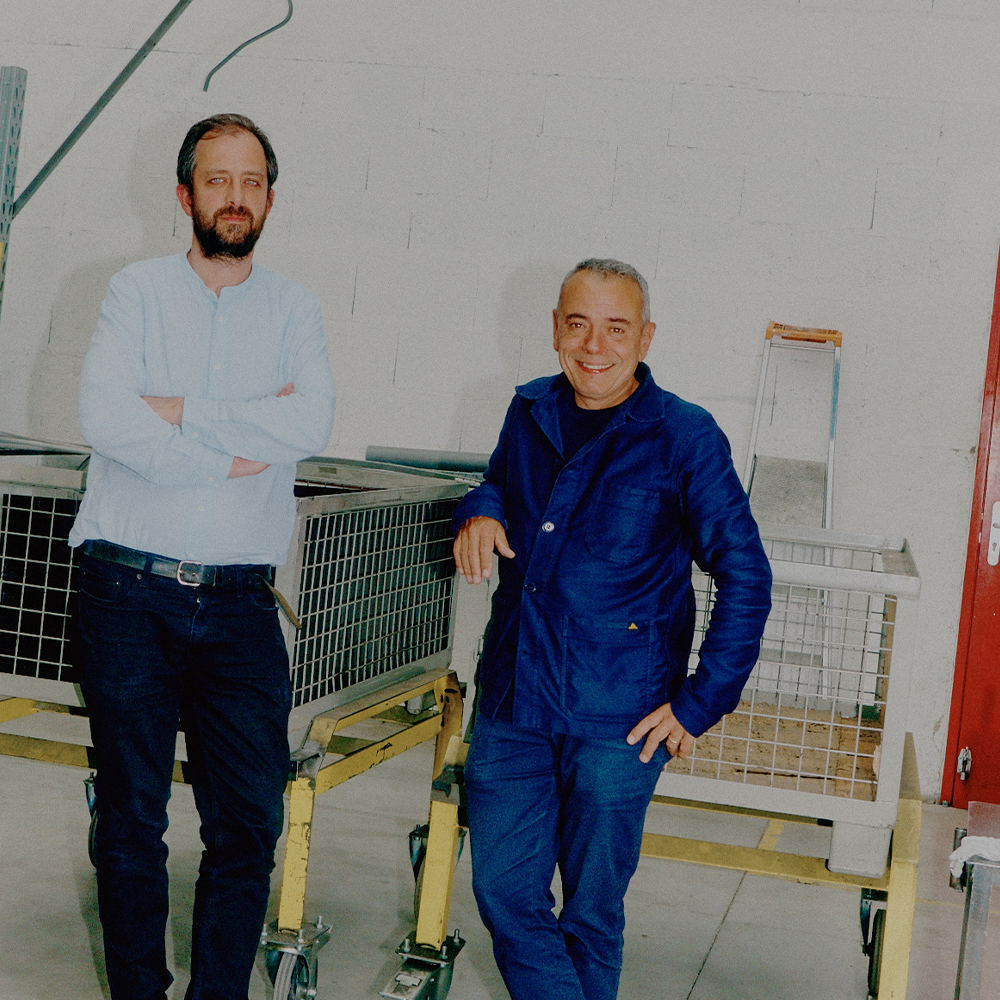
There’s something afoot in the peaceful Burgundian town of Autun. Among the vineyards and the vestiges of Roman temples, design brand Tolix has been undergoing what could be described as a fashion makeover since Antoine Bejui and Emmanuel Diemoz took over the company in October 2022. After meeting at Parisian couture house Balmain, where they held executive roles and helped to save the firm from bankruptcy, Bejui and Diemoz worked at fashion brands Anya Hindmarch and Carven, respectively. But when the opportunity to turn around a French heritage brand arrived, the pair sensed that it was time for an industry sidestep. Now, nearly two years since they bought the company, they have helped Tolix to get its groove back.
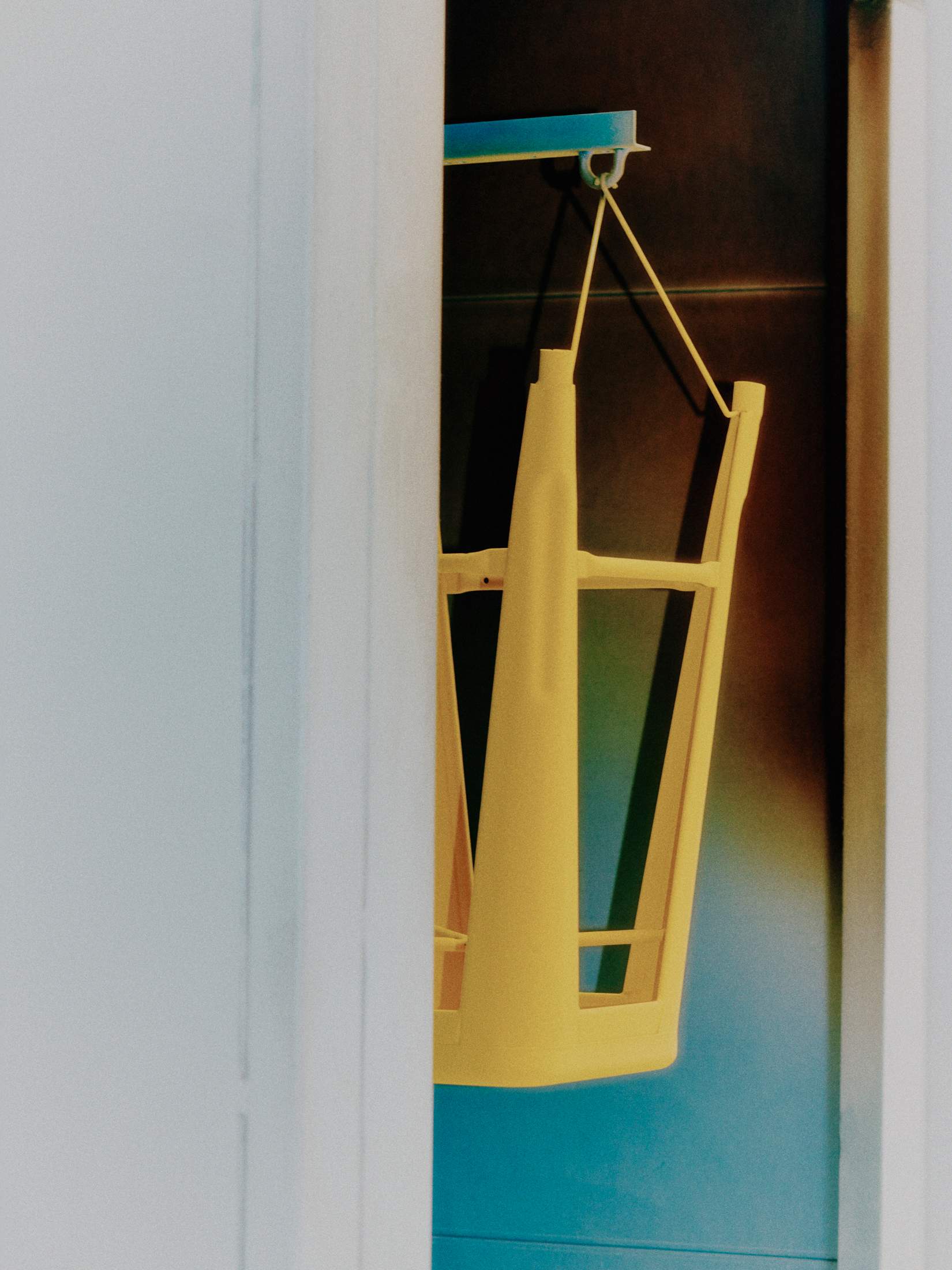
Founded in 1927, Tolix produces sturdy steel chairs and stools that you’ll spot in many parks, terraces and cafés across France. Despite this, it has long flown under the radar. The arrival of cheap made-in-China imitations in the 2010s resulted in a challenging time for the company. “Tolix occupies a space in the French collective consciousness without many of us realising it,” Bejui tells monocle at the company’s industrial headquarters in Autun. “The brand was losing esteem. It’s like we’ve taken over a vineyard that hasn’t been tended to for a couple of decades but no real damage has happened. It just needs some attention and care to bear fruit again.”

Raw steel reissue of the 1958 UD chair
Bejui and Diemoz’s priority after purchasing Tolix was to streamline its catalogue. Initially, only a small selection of its most emblematic pieces were produced, including the t37 chair, which the brand’s founder, Xavier Pauchard, designed in 1937, and the UD chair by his son Jean, originally made for the University of Dijon in 1958. From there, new designs have gradually been introduced in a more cohesive manner. “While we wanted to establish some house codes, we didn’t want to get stuck on the same three chairs,” says Bejui. “So Tolix asked French designer Pauline Deltour to add pieces such as a high-chair and a bench to her outdoor patio collection [which launched in 2020].” With the brand’s offerings tightly controlled, the materials and colours were also reworked and a more restrained palette introduced. Finally, the duo’s background in fashion came into play as the logo, image and branding were given a contemporary refresh.
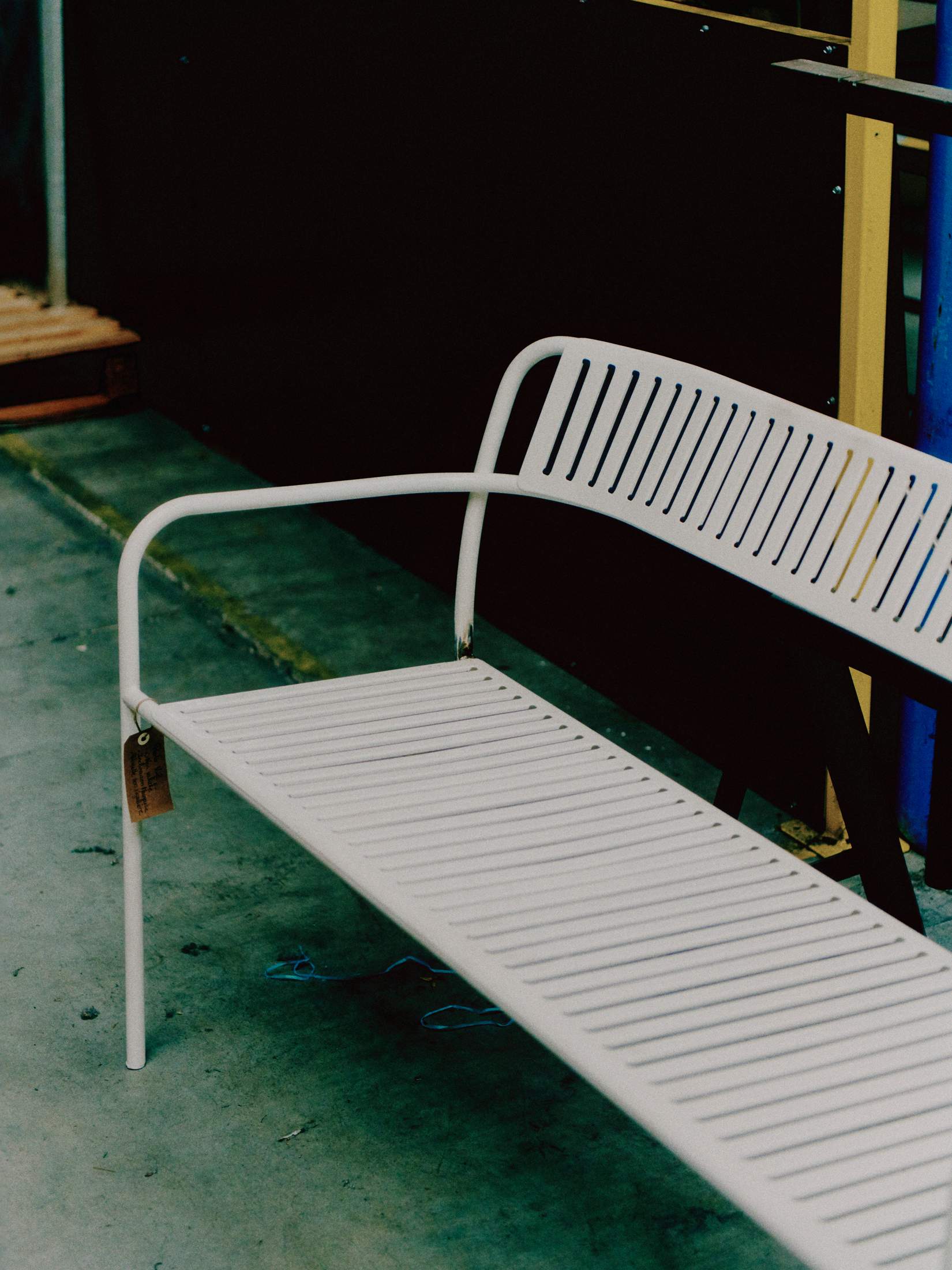
Tolix’s new ownership reflects a wider trend that has been gaining momentum in recent years: fashion crowds have serious designs on... well, design. Luxury brands including Prada, Bottega Veneta and Hermès are now regular fixtures at Milan Design Week. New Parisian design salon Matter & Shape made waves in March when it launched during the French capital’s fashion week. Finnish heritage brand Iittala’s new creative director, Janni Vepsäläinen, made the switch to design from UK label JW Anderson. France, where the luxury industry employs more than a million people, presents itself as fertile ground for this type of aesthetically minded cross-pollination, helped by a general appreciation for and investment in smaller-scale manufacturing.

When Bejui and Diemoz took over Tolix, they inherited a factory staffed with talented craftspeople who specialise in the production of its metal pieces. Autun and the surrounding Sâone-et-Loire region were once bastions of the French metalworking industry and many of the tools used to make Tolix’s designs date back to the mid-20th century. As we make our way across the factory floor, sheets of steel are being cut, moulded, hand-hammered and checked. One chair is being customised with an engraving as a wedding gift for an employee. “We keep our production as artisanal as possible,” says Maxime de Almeida, who is responsible for development at Tolix. “By continuing to use the techniques that have been inherited from our ancestors, we’re keeping our savoir-faire alive. Today we employ 30 people who can produce as many as 300 products per day.”

Tolix has been designated by the French state as a Living Heritage Company – a prestigious label that comes with the responsibility to transmit know-how to young apprentices. On the factory tour, a stop is made so we can watch a new addition to the team, Samuel, weld a chair with a thin brass brazing rod. The choice of brass rather than copper or aluminium is a Tolix signature. It also helps to distinguish the genuine article from imitations, as the welding process leaves behind gold-coloured marks.
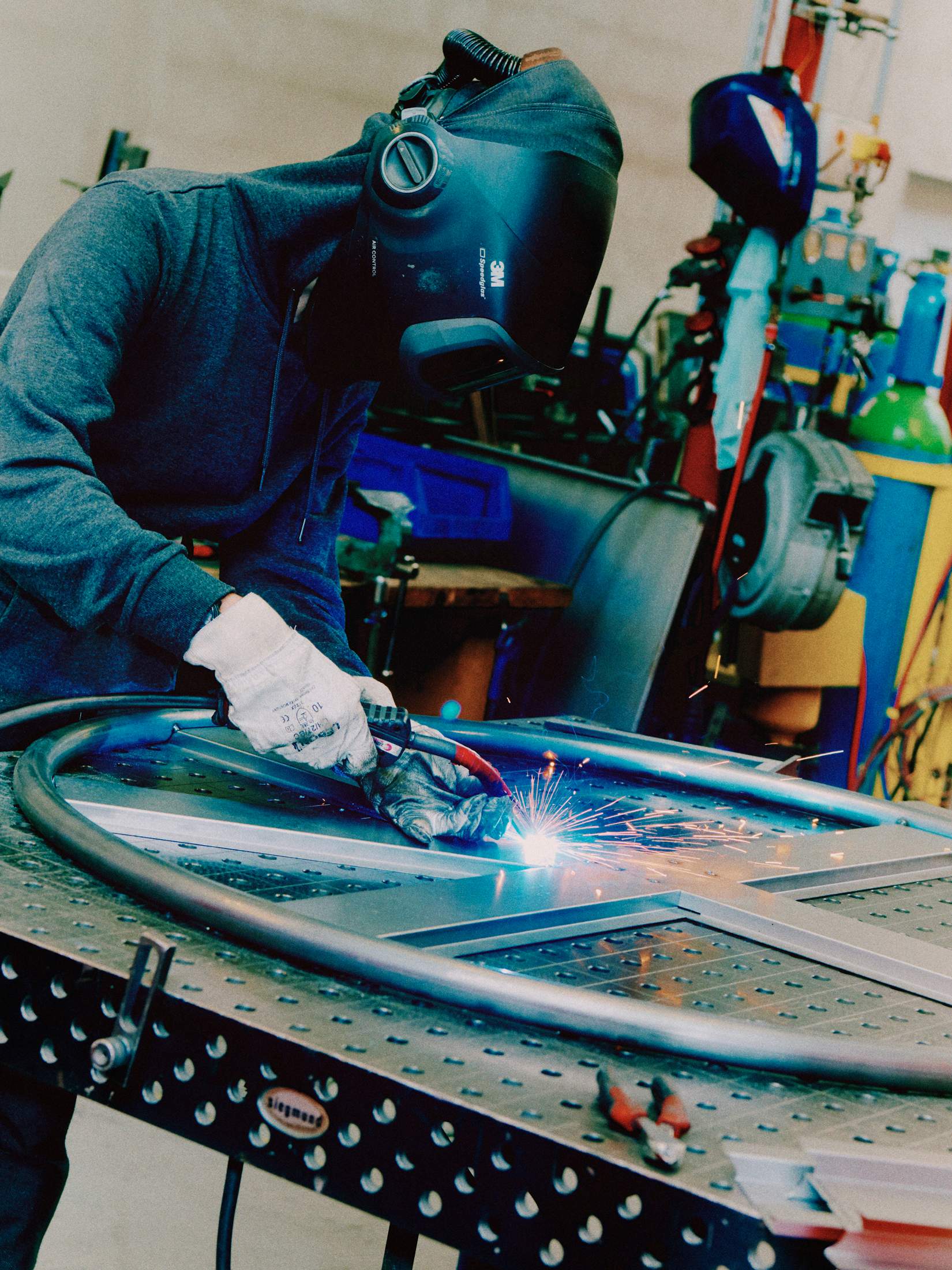
Once the pieces are cut, moulded, assembled and welded, they are cleaned and galvanised or powder-coated. The hazmat-suit-clad team responsible for this process carefully examines every newly coated piece as it’s hung upside-down from a revolving conveyor belt. If a paint coat isn’t quite up to scratch, it will be sanded down for another round. In the stock room, colour labels point to a restrained palette going form jet black to brown green and oyster white. For those who are more partial to the industrial look of metal, a simple coat of varnish is also an option.
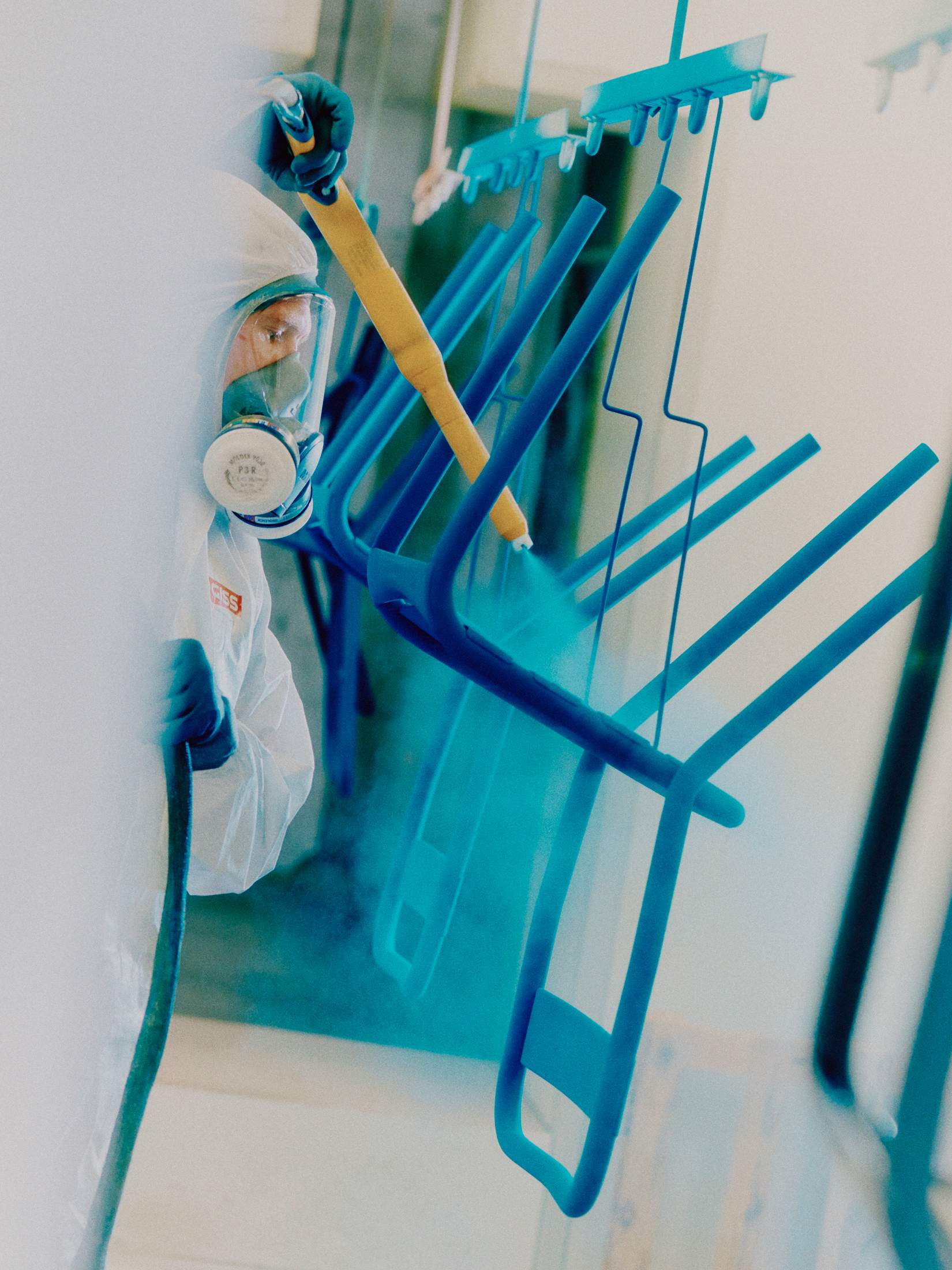
Luckily for Bejui and Diemoz, metal furniture has been enjoying a renaissance, with aluminium and steel designs taking over bars and restaurants in cities such as Paris and Sydney. This year, as part of their plan to broaden Tolix’s international appeal, the company has been cropping up at design fairs including Matter & Shape and Milan Design Week (at the latter, in Finnish firm Marimekko’s temporary café Bar Unikko). A new flagship on Paris’s Boulevard Saint-Germain is helping Tolix to establish itself as a premium brand. As for global retail, the company works with select shops and stockists to reach a demographic that has an appreciation for French manufacturing and industrial history.
“We’re here to save a piece of national heritage and make sense of it,” says Bejui. The entrepreneurial duo now split their time between Paris and Burgundy to be close to the manufacturing team. “It’s a source of pride for Frenchmen that we have these extraordinary companies such as Tolix. I feel a civic duty to tell people about the marvels that take place here.” — tolix.com
Tolix timeline:
1917
Xavier Pauchard sets up a factory making steel household items.
1927
Pauchard trademarks Tolix.
1937
The Pauchard-designed T37 chair is launched.
1958
The UD chair is released.
2000
Emmanuel Diemoz joins fashion firm Balmain.
2011
Antoine Bejui joins Balmain as CFO.
2012
Diemoz becomes Balmain’s CEO.
2017
The pair leave Balmain, after growing annual revenue to more than €120m.
2020
Tolix releases the Patio collection by Pauline Deltour.
2022
Bejui and Diemoz buy Tolix.


